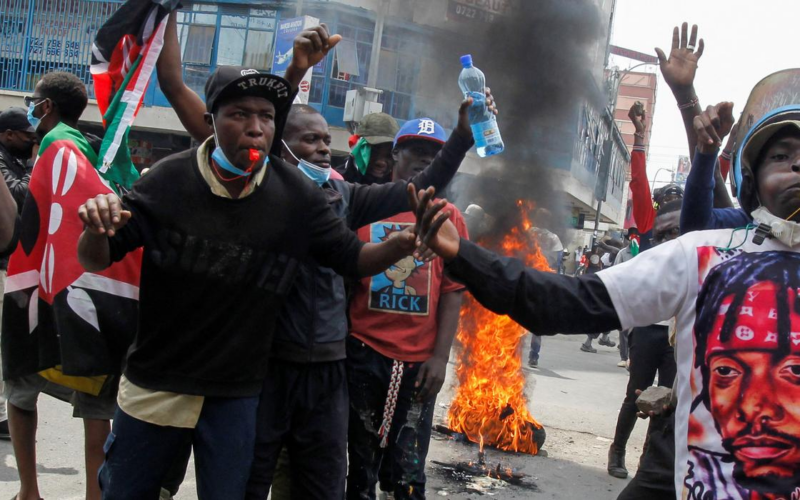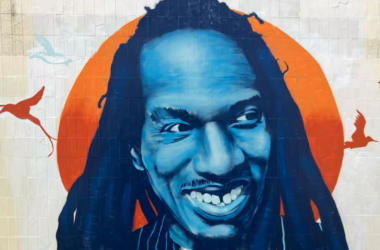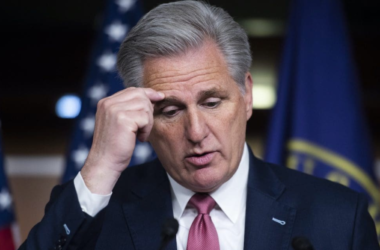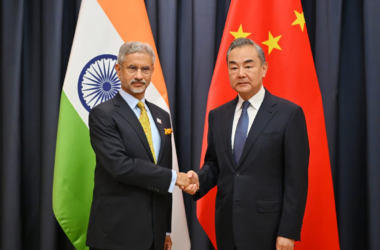Kenya saw a resurgence of protests on Tuesday, as demonstrators in multiple cities clashed with police amid mounting frustration over economic issues and alleged government misconduct. In Nairobi, the capital, police responded to protestors with tear gas as they set fires and threw stones on major roads. Sporadic confrontations and arrests were reported throughout the central business district.
DW correspondent Sella Oneka described scenes of small protest groups being chased by police, who periodically discharged tear gas to disperse the crowds. “There was a lot of tension, with officers making several arrests throughout the day,” Oneka observed.
The protests continued despite President William Ruto’s recent decision to scrap the controversial Finance Bill, which had triggered significant unrest. Ruto’s backtrack came after sustained public pressure, including attempts by protesters to storm Kenya’s parliament last week.
Tuesday’s demonstrations, while quieter near the parliament itself, were driven by broader grievances. Hussein Khalid, a human rights lawyer and head of the organization Haki Africa, stressed the ongoing demand for accountability. “We must make sure our concerns are heard, and we stand together with our fallen comrades demanding justice,” Khalid told DW.
According to the Kenya National Commission on Human Rights, recent demonstrations have resulted in 39 deaths and 361 injuries over the past two weeks, with allegations of police brutality and enforced disappearances surfacing. Last week saw police using live ammunition against demonstrators who breached the parliament compound, exacerbating public outrage.
Despite the lower turnout on Tuesday, protester Philip Mslo emphasized the importance of continuing the struggle. “It’s really important to show up for my brothers and sisters … and unite,” Mslo said.
Security measures heightened, with several embassies, including those of the US, Ukraine, and Poland, advising their citizens to avoid crowded areas. Many shops in Nairobi remained closed as a precaution against potential violence, with guards stationed outside to deter looting.
A local shop owner recounted his experience, explaining that his shop and others had been targeted by individuals wielding crude weapons. “Those are not demonstrators; those are thugs,” he remarked, noting that attackers primarily targeted M-Pesa mobile money service shops and phone dealers.
Protests extended beyond Nairobi, with significant rallies occurring in other cities like Mombasa, where hundreds took to the streets with chants demanding President Ruto’s resignation. Smaller protests were also reported in Kisumu, Nakuru, and Nyeri.
President Ruto, in a speech on Sunday, invited youth to engage in dialogue to address their concerns. However, many demonstrators expressed disillusionment with the government’s approach. Judy Achieng, a programs officer at the political advocacy group Siasa Place, criticized the government for failing to act sooner. “We are tired. The time for talking is out. We want implementation. We want the cost of living to go down,” Achieng stated.
Ruto, who was elected in September 2022 on promises to reduce living costs and create jobs, faces growing discontent over unmet expectations. High levels of unemployment and poverty persist, particularly among young people, despite higher education rates compared to previous generations. This economic frustration is compounded by perceptions of corruption and lavish lifestyles among politicians, according to Achieng.
Kenyan politicians are among the highest paid in the world relative to GDP, a fact that has fueled public resentment. DW journalist Andrew Wasike noted the deepening distrust between the government and the protesting youth. “There’s no trust between the president and the youth who are protesting,” Wasike reported. “The youth are speaking with one voice, expressing their discontent with the current system.”
The ongoing protests highlight the broader challenges facing Kenya’s governance, as citizens demand more than policy reversals—seeking systemic changes to address economic hardships and perceived inequities.








